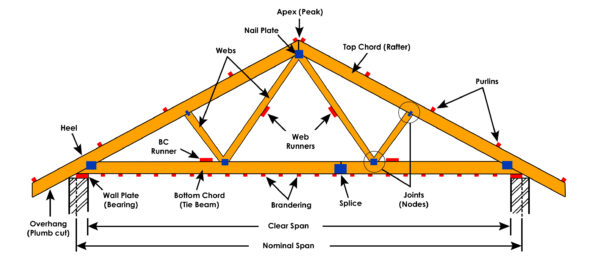Subsurface scanning is a non-invasive technique used to map and visualize the composition and structure of the ground beneath the surface.
This technology employs various methods, such as ground-penetrating radar (GPR), electrical resistivity tomography (ERT), and seismic refraction, to gather data about subsurface features without the need for excavation.
By sending electromagnetic waves, electrical currents, or seismic waves into the ground and analyzing their reflections or refractions, subsurface scanning can identify and locate underground utilities, geological formations, voids, and other anomalies.
This information is crucial for a wide range of applications, including construction planning, archaeological surveys, environmental assessments, and geotechnical investigations.
Subsurface scanning provides a cost-effective and efficient means of obtaining valuable insights into the hidden world beneath our feet, enabling informed decision-making and minimizing the risks associated with underground work.
As technology advances, subsurface scanning continues to evolve, offering increasingly detailed and accurate representations of the subsurface environment.
What is SubSurface Data?
Subsurface data is information gathered about the composition, structure, and features of the ground beneath the surface.
This data is obtained through various non-invasive scanning techniques, such as ground-penetrating radar (GPR), electrical resistivity tomography (ERT), and seismic refraction.
These methods use electromagnetic waves, electrical currents, or seismic waves to create detailed maps and images of subsurface features, including soil layers, rock formations, underground utilities, voids, and other anomalies.
Subsurface data is essential for a wide range of applications, from construction planning and archaeological surveys to environmental assessments and geotechnical investigations.
By providing valuable insights into the hidden world beneath our feet, subsurface data enables informed decision-making and helps minimize the risks associated with underground work.
Purpose of Ground Penetrating Radar Scanning (GPR)
The key purpose of GPR scanning is to map or detect objects and interfaces below the surface without drilling, digging or disturbing the material. Some typical applications include:
- Locating rebar, conduits, pipes and wires embedded in concrete or soil
- Mapping cracks, voids, honeycombing and other defects in concrete
- Measuring pavement layer thickness
- Detecting sinkholes, underground storage tanks and natural voids
- Archaeological investigations without excavation
GPR can provide rapid scanning and imaging of the shallow subsurface for many civil engineering and environmental site assessment applications.
Types of GPR Devices
GPR systems consist of several components – a signal transmitter, receiver antennas, control unit and data recording device. Systems vary based on antenna frequency and configuration:
- Air-coupled antennas – High-frequency antennas that do not require contact with the material surface. Best for loose soils or asphalt.
- Ground-coupled antennas – Lower frequency antennas in wheeled carts or sleds pulled along the surface. Used for concrete scanning.
- Borehole antennas – Specialized antennas used to scan material interfaces from inside pipes or drilled holes.
Advanced GPR units have integrated position tracking, multiple antennas and 3D data processing. Handheld units provide a more affordable option for small-scale scanning.

Applications of Ground Penetrating Radar Scanning
Ground penetrating radar has become an indispensable non-destructive testing tool with a diverse range of applications in civil engineering and adjacent fields:
Infrastructure and Transportation
- Evaluating concrete structures for cracks, honeycombing, and rebar corrosion
- Measuring pavement layer thicknesses and detecting voids under roads
- Scanning bridge decks to map de-laminations and degraded areas
- Locating underground utilities – pipes, cables, conduits before excavation
- Detecting sinkholes, natural voids and loose fill under roadways
Geotechnical and Environmental
- Subsurface contamination mapping and storage tank detection
- Locating cracks, fractures and dissolution features in rock
- Mapping depth to groundwater table and bedrock interface
- Characterizing soil stratigraphy and soft ground deposits
Archaeology and Forensics
- Subsurface mapping of burial sites, artifacts and excavation targets without digging
- Imaging crypts, tombs and underground chambers
- Locating buried evidence, weapons, vehicles and caches through soil or walls
- Documenting crime and crash scenes below ground or beneath surfaces
Construction and Inspections
- Verifying quality of new concrete pours by rebar mapping and defect detection
- Checking formwork prior to concrete placement
- Measuring structural element thicknesses like slabs, columns and walls
- Scanning walls and structural facades to map internal framing
With ongoing advances in data processing, 3D scanning, and interpretation techniques, GPR continues to evolve as a versatile non-destructive subsurface characterization tool for infrastructure preservation and environmental stewardship.
Processing Ground Penetrating Radar Data
The raw GPR scan data requires processing and interpretation to generate useful subsurface images:
- Processing – Applying filters and gains to clean up background noise and enhance reflections.
- Interpretation – Identifying reflection patterns, amplitudes and geometries indicative of specific objects or defects.
- Presentation – Creating annotated radargrams, 3D maps or cold video logs to convey findings.
Advanced processing can improve image clarity and analysis but requires experience to avoid misinterpretation.

Limitations of GPR Concrete Scanning
While suitable for many concrete evaluation needs, there are some limitations to consider:
- Penetration depth is limited, usually up to 18 inches for rebar detection.
- Does not perform well in highly conductive materials like wet concrete or salt-contaminated structures.
- Surface roughness and rebar congestion can complicate data interpretation.
- Provides indirect evidence of flaws – confirmation may require coring or excavation.
- Relatively high equipment cost compared to some other test methods.
Conclusion
GPR scanning is a versatile subsurface imaging tool with extensive applications in civil engineering and construction quality control.
GPR is highly site-specific and works best in non-conductive materials like concrete, asphalt and dry soil. Clay soils and environments with high electromagnetic noise can limit effectiveness.
Proper selection of GPR equipment and qualified operators is key to obtaining usable data. With its ability to “see” inside solid materials non-destructively, GPR provides insights vital to responsible infrastructure management.







